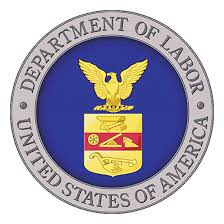By Joe M. Kraska
On April 1, 2019, the Department of Labor (DOL) announced a proposed rule to clarify when employers are considered joint employers where they share or exercise control over workers. This Notice of Proposed Rulemaking (NPRM) came on the heels of two other significant NPRMs from the DOL regarding minimum salary levels for overtime exemptions (March 22, 2019) and the other regarding types of compensation that must be included in overtime calculations (March 28, 2019). It seems the DOL is pushing to ensure completion of its regulatory agenda in advance of the 2020 election cycle.
The Fair Labor Standards Act (FLSA) requires that covered employers pay their employees at least the federal minimum wage for all hours worked and overtime for all hours worked over 40 in a workweek. The term “employee” is defined under the FLSA as “any individual employed by an employer” and “employer” is defend to “include[] any person acting directly or indirectly in the interest of an employer in relation to an employee.” The term “employ” is also defined under the FLSA to mean “to suffer or permit work.” Therefore, in situations where there may be two or more potential “employers” who “employ” an “employee” the need to determine who is liable for the payment of employee wages can become crucial.
The Current Rule
The NPRM regarding joint employment, as currently written, would revise the current regulations at 29 C.F.R. Part 791. The DOL has not made any meaningful revisions to this regulation since its promulgation in the nineteen fifties. Under this regulation multiple persons can be considered joint employers of an employee or employees if they are “not completely disassociated” with the employment of the employee. However, the regulation falls short of adequately explaining what “not completely disassociated” means in certain potential employer situations.
Currently, under the FLSA, to be considered a joint employer, a business must exercise direct operational and supervisory control over another business’s employee. In those situations, both companies will be jointly responsible for the employee’s wages. In general, the most common set of circumstances in which a joint employer situation is likely to arise is in the franchise owners/franchisee context and in situations where businesses utilize temporary staffing agencies to supplement their workforce.
This proposed rule would also lay to rest the January 2016 Administrator’s interpretation on joint employment that was withdrawn by the Trump administration in June 2017. This Obama-era joint employer interpretation was quite expansive and could have been interpreted to apply to a wide range of companies based on the nature of their business and relationships with other companies regardless of whether those relationships were understood to create a joint employment relationship. The proposed rule is aimed at making the joint employer test more aligned with the modern workplace.
The Proposed Rule
The proposed rule creates a four-factor balancing test that replaces the “not completely disassociated” language currently in the regulation that would consider whether the potential joint employer has the power to:
- Hire or fire the employee;
- Supervise and control the employee’s work schedules or conditions of employment;
- Determine the employee’s rate and method of payment; and
- Maintain the employee’s employment records.
Of these factors, no single factor alone would be dispositive in the determination of whether a joint employment relationship exists, as the analysis will be dependent on the particular facts of each case. The proposed rule will also allow for additional factors to be used to determine joint employer status only if they indicate whether the potential joint employer:
- Exercises significant control over the terms and conditions of the employee’s work; or
- Is otherwise acting directly or indirectly in the interest of the employer in relation to the employee.
Again, the use of additional factors is limited to the circumstances mentioned above. The proposed rule will also clarify that there is no specific business model, business practice, or business agreement that will make the finding of joint employer status any more or less likely. Notably, the proposed rule will identify certain “economic dependence” factors that will not be determinative in the joint employment analysis. Specifically, the proposed rule will identify and provide three examples of “economic dependence” factors that will not be relevant in the joint employment determination.
Additional changes to the rule include reiterating that joint employers will be considered jointly and severally liable for employees’ wages due under the FLSA. The proposed rule will also include illustrative examples that apply the newly proposed rule to certain factual scenarios as an effort to explain the new rule better. There will also be a severability provision in the proposed rule, stating that if any portion of the new rule is held invalid or stayed pending agency action, the remaining provisions of the regulation would remain in effect.
In the NPRM, the DOL also stated that this newly proposed rule would be helpful in light of recent National Labor Relations Board (NLRB) decisions that have altered the analysis for determining joint employer status under the National Labor Relations Act (NLRA). Similarly, the NLRB has also begun the rulemaking process to better define the joint employer test under the NLRA.
The proposed rule will not affect employee earnings and overtime. Employers will still be obligated to comply with the FLSA in all respects. According to the DOL the proposed rule would ensure that employers and user employers clearly understand their responsibilities related to paying employees at least the federal minimum wage for all hours worked and overtime for all hours worked over 40 in a workweek.
Conclusion
The NPRM was published on April 9, 2019 in the Federal Register and interested parties had sixty days, until June 10, 2019, to submit comments on the DOL’s proposed rulemaking. During the comment period there were approximately 5,700 public comments posted on regulations.gov regarding the proposed rule. If the DOL’s proposed joint employer regulations are adopted it will be a welcome change for many businesses after many years of uncertainty and sometimes conflicting views being expressed by courts and administrative agencies regarding joint employment situations.
It will likely be sometime before a final rule that employers can rely on is available. In the meantime, employers should continue to monitor the rule’s progress and evaluate their current employment relationships to determine if the joint employment relationships will be a potential issue they need to address.

Attorney
Cross, Gunter, Witherspoon & Galchus
Jkraska@cgwg.com
www.cgwg.com
